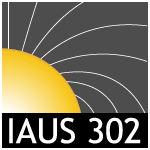Using spectroscopic observations and photometric light curves of 298 nearby M dwarfs from the MEarth exoplanet transit survey, we examine the relationships between magnetic activity (quantified by H-alpha emission), rotation period, and stellar age (derived from three-dimensional space velocities). Although we have known for decades that a large fraction of mid-late-type M dwarfs are magnetically active, it was not clear what role rotation played in the magnetic field generation (and subsequent chromospheric heating). Previous attempts to investigate the relationship between magnetic activity and rotation in mid-late-type M dwarfs were hampered by the limited number of M dwarfs with measured rotation periods (and the fact that vsini measurements only probe rapid rotation). However, the photometric data from the MEarth survey allows us to probe a wide range of rotation periods for hundreds of M dwarf stars (lower than 1-150 days). Over all M spectral types we find that magnetic activity decreases with longer rotation periods, including late-type, fully convective M dwarfs. We note the most magnetically active (and hence, most rapidly rotating) stars to be consistent with a kinematically young population, while slow-rotators are less active or inactive and appear to belong to an older, dynamically heated stellar population.
- Picture

 PDF version
PDF version
